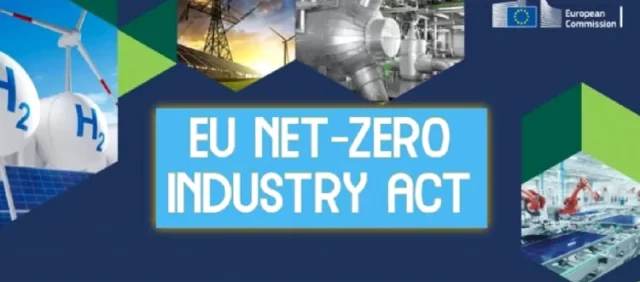
On 16 March 2023, the European Commission published its Net Zero Industry Act, in order to promote ten technologies to implement its Green Deal and create so-called European Academies to provide workers with skills in order to develop those technologies. An exercise of centralised economy as had not been seen since the Soviet Union’s five year plans of the Cold War.
The draft act is currently under discussion at the European Parliament. As it is usual in the Union’s legislative procedure, the Commission conducted a stakeholder consultation, which was responded by exactly 215 entities and individuals across the continent.
Many of them stress the limitations of Von der Leyen’s initiative. For instance, the Norwegian solar energy company NorSun regrets operational gap issues including existing capacities, where production is struggling to be competitive in European markets.
The Hamburg Administration for Economy and Innovation raises questions in the implementation of the project, including low chances of meeting very short deadlines, practical impossibility of a one-stop solution for approval procedures due to the underlying complexity of approval procedures and administrative levels, blatant legal uncertainties, eventual rejection of applications due to incomplete or inadequate documentation.
According to Denmark’s leading fuel cell company Ballard Power Systems, the aspirational target of building 40% of net-zero technologies by 2030 seems difficult to reach, the new public procurement rules lack clarity, the resilience criteria should be more precise, there is a poor alignment with existing funding instruments and very competitive bids may be pushed out of the procurement process resulting in major damage to the EU’s trade openness and credibility.
The Portuguese Association of Electrointensive Industries considers that the proposal lacks a well-set financing rationale, building on the EU budget and making use of several Commission agencies, as opposed to the United States Inflation Reduction Act. Worse still, the proposal should be technologically neutral and should not limit the technologies that are allowed for funding. This association goes on to predict that certain large European undertakings will set part of their operations in the USA.
Galp Energia perceives the proposal as a list of intentions, with no clear guidance on how Member States will enforce measures, such as increasing capacity. It loses focus on support to technology manufacturing and production and it does not unlock additional funds or other financial incentives such as tax benefits. It also fails to give clarity on which amounts will be allocated to each technology and the respective application criteria, key to drive investment decisions; furthermore, it misses technologies related to carbon utilization.
The Belgian think-tank ERCST also underlines the risk of prematurely locking into a particular technology, which can lead to investments being directed towards favoured technologies dictated by policy, potentially hindering the exploration of new and diverse solutions. Moreover, the funding instruments available for clean tech manufacturing are inefficient, as businesses cannot grasp the entirety of the funds at their disposal in a timely and uncostly way.
As for the Federation of the German Waste, Water and Circular Economy Management Industry, the proposal falls short in that it lacks funding, does not create real incentives for investments, establishes long deadlines for permit-granting processes, and restricts technologies for their consideration as strategic.
As a final example of criticism among many other, Austrian gas storage operator RAG reminds that solid carbon is an important raw material in many industries and therefore it is important to apply an open technology approach. An infrastructure development must be advanced quickly and for energy carriers there is a lack of funding opportunities and financing for transport and storage infrastructure.
Source of image: Italian Climate Network



 Subscribe
Subscribe